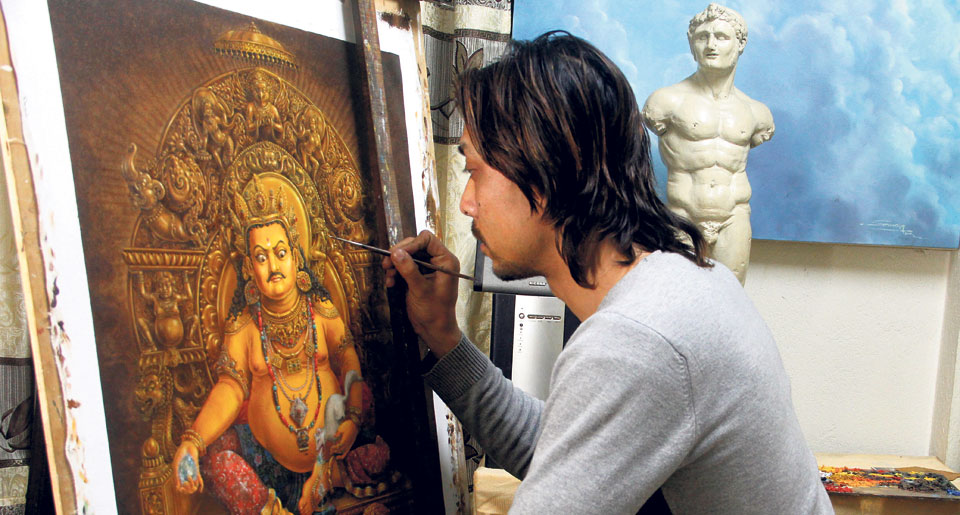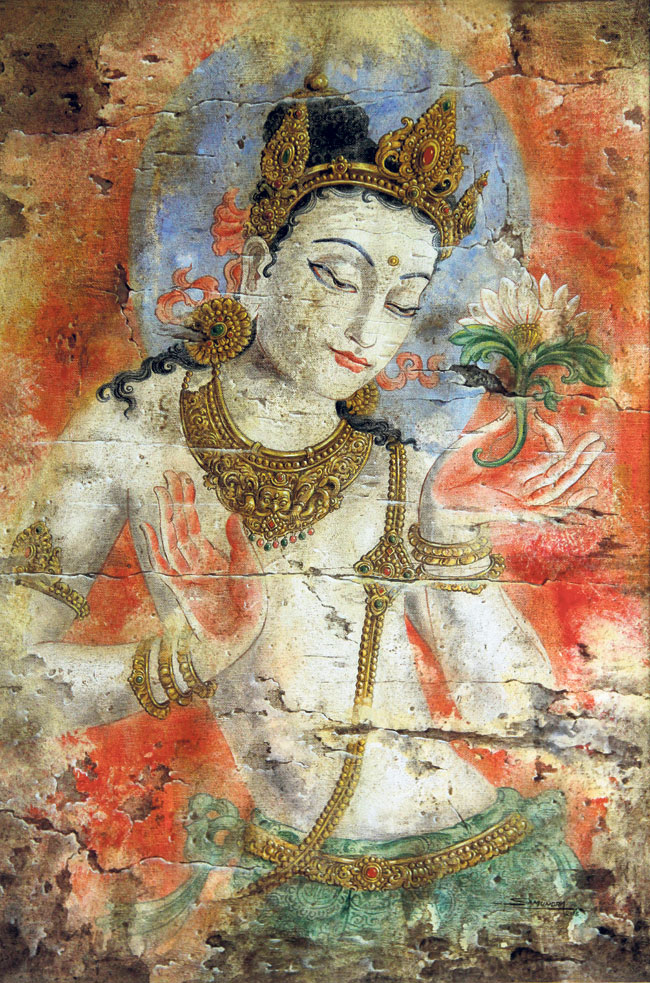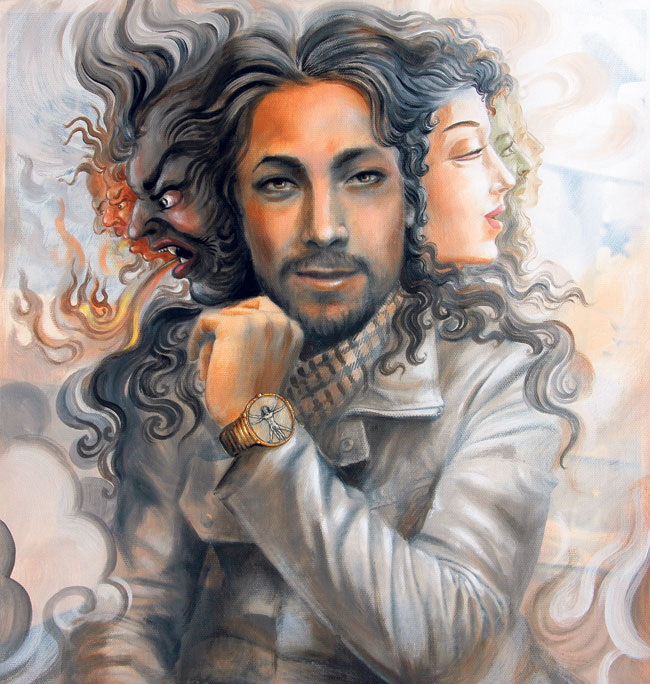60 artworks by 50 artists exhibited in Thamel
1 day ago
We are a team of professional management and journalists — one of the best in the Nepali media. Our duty toward our readers is to provide them with impartial news, bold views, in-depth analysis and thought-provoking commentary. We shall do this without fear or favor, and we shall be guided by nothing but our conscience.
Know More
6 days ago

15 days ago

‘Art is the true manifestation of beauty’, believes Samundra Man Singh Shrestha, who is one of the celebrated artists of Nepal. Having acknowledged his passion, Samundra engaged himself with fine arts from an early age of 14. He has been dedicated in the field for two and a half decades and his collections are sold in Europe, Asia and US. Having won four national awards, two international award from Kolkata and Japan with a wide recognition worldwide, Samundra is looking forward to receiving one of the most prestigious awards ‘SPANDAN Excellence Award’ by Spandan International in the end of July.
In conversation with My City’s Sonam Lama, Samundra talked about his experience and challenges in the field of fine arts.
Tell us more about your paintings.
I have so far tried my hands on various categories of paintings. From oil to acrylic painting or traditional to modern art, I have attempted all of these. However, since I was more drawn to contemporary traditional Paubha painting from the beginning, I have dedicated much of my work on them. As a kid, I was enchanted by the tales of devils and divinity. My visits to pious and sanctified places also never cease to fascinate me. Later on, this interest led my way to traditional paintings.
How did your journey in the field of art begin?
After the completion of my SLC (now SEE), I took up art classes for a beginner. Although, my friends recommended me to study commerce and run a business of my own, I was certain that I would perform best in arts. I joined Lalitkala Campus for five years before enrolling in Sirjana College of Fine Arts to gain theoretical knowledge and enhance my fine art skills. But to my dissatisfaction, the lessons highly prioritized modern art. Moreover, I began taking lessons on traditional Paubha paintings from my mentor Prem Man Chitrakar who endowed me with the knowledge and technicalities in traditional arts.

What were the setbacks on your way?
Because the concept of fine arts was not developed at the time when I had decided to initiate my career, I had a tough struggle trying to make my works got recognition in the market. Since art school and institutions barely provided lessons on traditional arts, it added hindrance on my way. Nevertheless, I managed to tackle the challenges with the right amount of courage and patience.
As per you, what qualities do you think an artist should have?
Art is much of an aesthetics crafted by the amalgamation of visual, tactile and cognitive skills. In order to bring out the life in any work of art, it is crucial that these skills be played well. Moreover, since every detail is important to bring out the right effect in painting, the stroke and colors should be meticulously analyzed.
How has scope of fine arts changed over the decades in Nepal?
The number of Nepali art collectors has increased in the national market, resulting in improved scope of fine arts within the country. People here have grown keen to invest in art, which not only has revived the scope of fine arts, but also has contributed to preserve the ancient traditional arts of Nepal.

Would you like to convey any message to the readers?
I make myself deliver some intense message through all my paintings. As an individual and an artist, I realize that it is my responsibility to preserve ancient traditional arts of my country. Similarly, I believe everyone should contribute their bit from their respective fields to uplift and preserve the rich culture of our country.
Leave A Comment